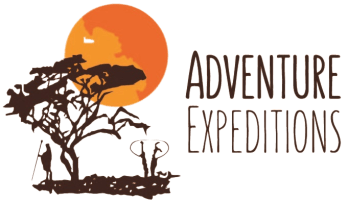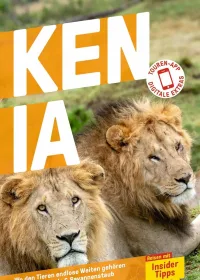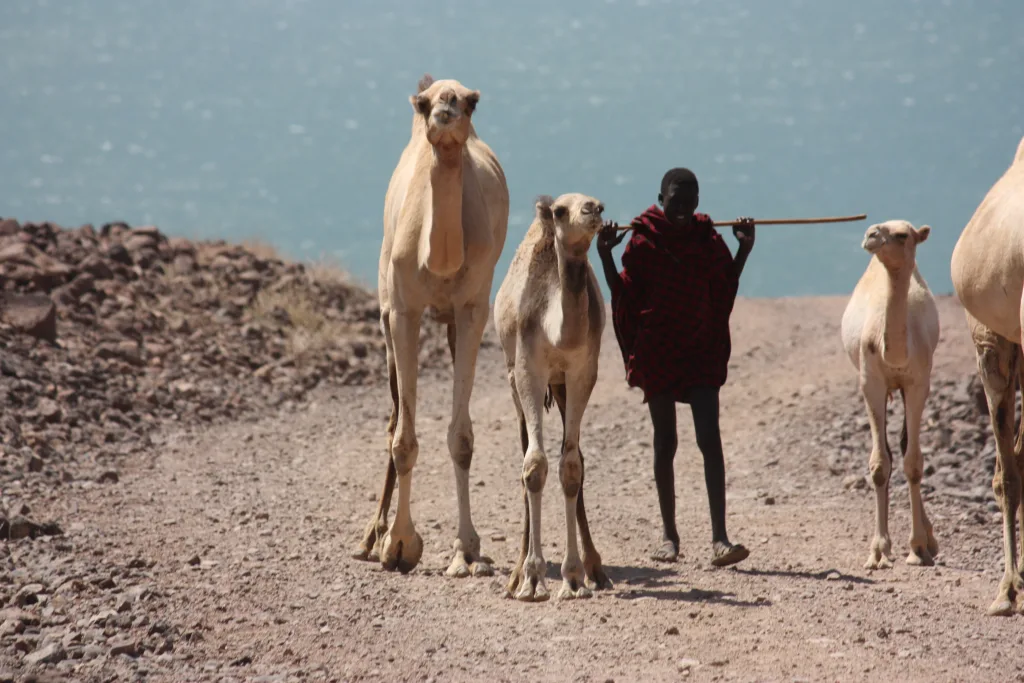
Kenya is a vibrant tapestry of cultures, with numerous tribes like the Kalenjin, Luo, Maasai, Samburu, Pokot, Rendile, and Turkana contributing to its diversity. While the Maasai and Samburu are globally renowned, the Turkana, Kenya’s third-largest tribe, offer a fascinating glimpse into a lesser-known but equally captivating culture. Outnumbering the Maasai, the Turkana maintain a rich, nomadic lifestyle deeply rooted in their arid homeland along the shores of Lake Turkana in Turkana County.
A Glimpse into Turkana Life
The Turkana are a Neolithic pastoralist group, thriving in the dusty, arid landscapes of Turkana County. Their livelihood revolves around pastoralism, hunting, and, for those near Lake Turkana, fishing. They raise cattle, goats, camels, sheep, and poultry, which provide milk, meat, and skins for clothing and bags. Unlike the Maasai and Samburu, whose animals hold deep spiritual significance, the Turkana view their livestock primarily as a source of sustenance, with less emphasis on ritualistic importance.
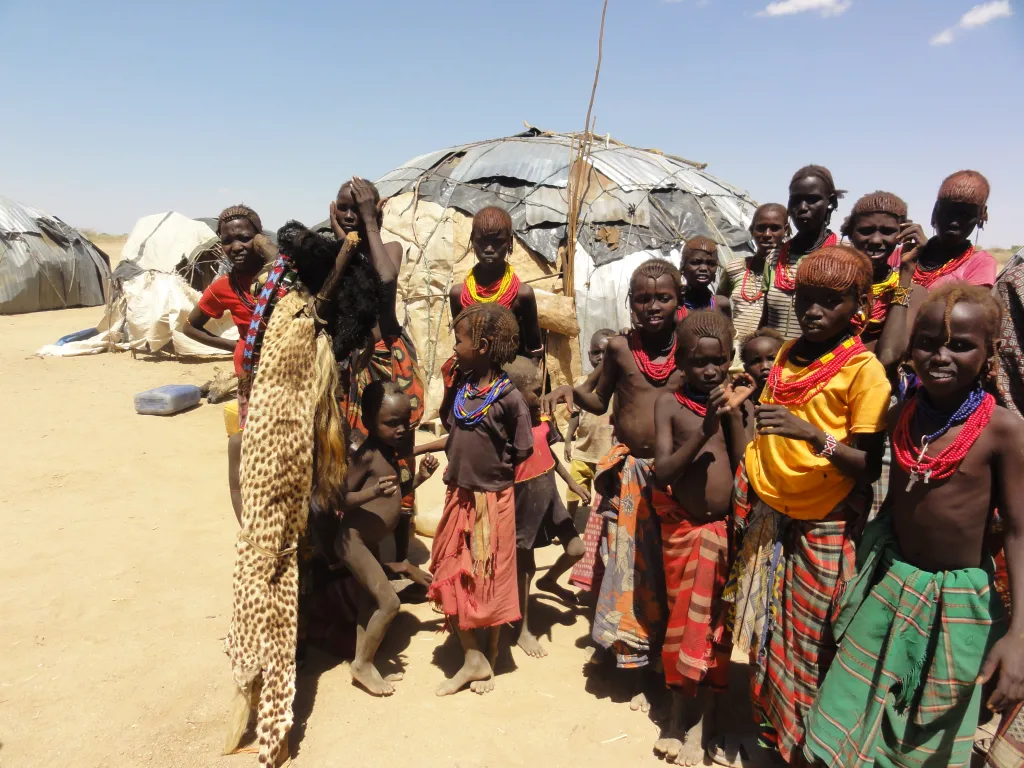
The Turkana are one of the world’s most nomadic tribes, frequently moving to sustain their herds. Their homes are ingeniously constructed from domed saplings covered with fronds of the Doum Palm (Hyphaene thebaica), hides, or skins, designed to house a family of six. Livestock pens, made from branches, reflect their resourcefulness in utilizing the environment.
A History of Resilience
The Turkana’s history is marked by fierce resistance to external control. Throughout the early 20th century, they opposed British colonization, prompting the British to launch the Labur Patrol in 1918—a massive military operation involving over 5,000 troops, including Sudanese soldiers, the King’s African Rifles, and warriors from rival groups. This campaign subdued the Turkana’s military strength, but their spirit of resistance persisted until Kenya’s independence in 1963.
Social Structure and Traditions
Turkana society shares similarities with the Maasai and Samburu, particularly in its age-group structures, though these are less rigid. The tribe is notably progressive regarding practices like male and female circumcision, often adopting such customs only when integrating with other tribes through marriage. Their adaptability reflects a practical approach to cultural exchange.

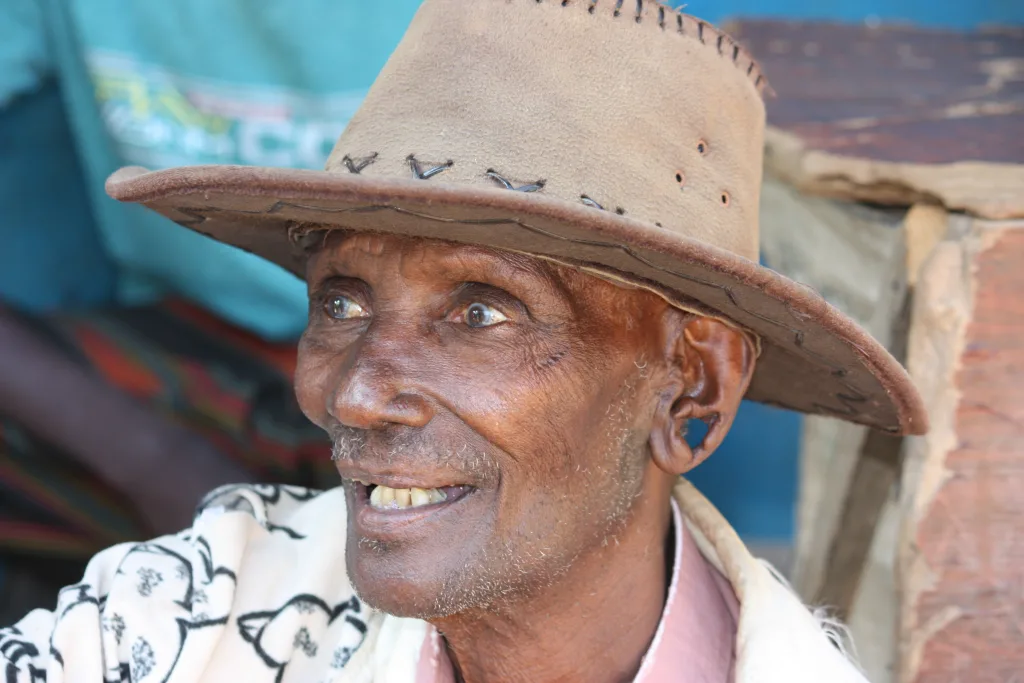
The Turkana are renowned for their intricate beadwork, particularly among women, whose jewelry tells a life story through woven patterns. Each design signifies milestones, allowing those familiar with the tradition to “read” a woman’s history through her adornments. Men, on the other hand, enhance their appearance with ostrich feathers for ceremonies and carry decorated fighting sticks, symbols of both utility and artistry.
Turkana craftsmanship is exceptional, with blacksmiths extracting iron from local rocks to forge spears and tools. Artisans also create objects from timber, leather, metal, seeds, bones, ivory, horns, hooves, nails, and feathers, showcasing their ingenuity in transforming natural materials into functional and decorative items.
A 7-Day Adventure into Turkana Culture
For those eager to immerse themselves in Turkana culture, a 7-day journey around Lake Turkana offers an unforgettable experience. Begin with a morning flight from Nairobi to Lodwar, where a representative will drive you to Eliye Springs Resort on the shores of Lake Turkana, the world’s largest desert lake and a cradle of humankind. Here, you’ll engage with traditional Turkana culture and visit Longelech, a nearby fishing village.
Explore Nariokotome, the site of the famous Turkana Boy fossil, and Kalokol, a hub for Turkana fishermen. Venture to Central Island National Park, home to volcanic crater lakes and Nile crocodile breeding grounds, perfect for birdwatching or simply soaking in the dramatic landscape. Journey to Moite to meet the El Molo, an ethnic group of traditional fishermen, and visit their sacred shrine. Conclude your trip with a relaxing day at Eliye Springs, enjoying the beach, optional fishing trips, or a soothing massage.
Why Visit the Turkana?
The Turkana offer a window into a resilient, adaptive culture that thrives in one of Kenya’s harshest environments. Their nomadic lifestyle, intricate craftsmanship, and rich traditions make them a compelling subject for cultural exploration. Whether you’re drawn to their history of defiance, their artistry, or the stark beauty of Lake Turkana, a visit to Turkana County promises a profound connection to Kenya’s diverse heritage.
Embark on this journey to discover the Turkana—a people whose story is as enduring as the land they call home.
